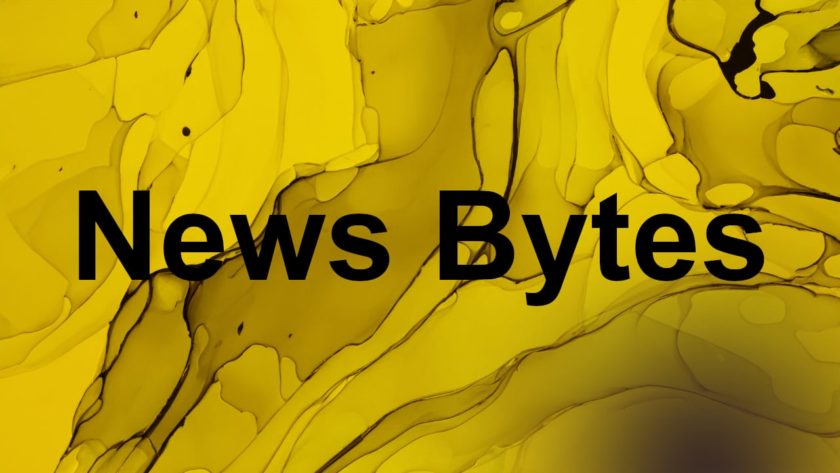The political and economic tensions between Italy and Europe are shaking the Eurozone. Italy has threatened to launch a currency parallel to the Euro to restore its debts to individuals and businesses, suggesting a possible “Italexit.” This, together with other moves introduced by the Italian government, has increased the demand for alternative assets such as Bitcoin.
Italy Is Shaking the Eurozone
Italy is experiencing a period of unprecedented political and economic instability.
It was enough to come up with a semi-propaganda message sponsored by the Five Star Movement and the League, the two parties in charge of the government, to shake up the rest of Europe.
The proposal would allow Italy to produce “mini-BOTs,” an alternative currency to pay off its debts with businesses and families. The proposal was so shocking that it attracted the attention of European commissioners in Brussels, the President of the ECB Mario Draghi, and the Economy Minister, Giovanni Tria, to reassure the partners of the region that the operation will not be carried out.
The news has even captured the attention of rating agency Moody’s and the Financial Times, which admit that this could be Italy’s first step towards exiting the Eurozone.
In April 2019, just before the rating valuation, Marcus Ashworth, one of the leading commentators of Bloomberg, warned investors about an imminent Italian financial crisis. Specifying that it is only a matter of “when,” not “if.”
The warning was confirmed on April 26, 2019, by Standard and Poor’s which affirmed Italy’s BBB rating thus forewarning the possibility of a downgrade in the next two years. Currently, Italy is just two steps above the investment grade boundary line that would classify its securities as highly-speculative Investments.
But there are other critical points to consider. To carry out their assessments rating agencies consider the trend of three indicators: The growth of the economy, the deficit-debt ratio, and the spread with respect to German government bonds.
Unfortunately, Italy does not transmit good news on any front.
The expected growth in 2019 stood at 1.1 percent; now the estimates range between -0.2 percent (OECD) and +0.2 percent (government and EU Commission). These forecasts mainly reflect the greater weakness of foreign demand observed in recent months and confirm the conditions of high uncertainty in the market.
The Italian deficit-debt ratio is likely to skyrocket in the face of risky government maneuvers including the privatization of 19 billion euros and increasing value-added taxes (VAT) for 2020. Meanwhile, even though the spread decreased from over 300 points in October 2018 to around 260.1 basis points, the Bank of Italy has highlighted that the numbers of which the government must be very careful are a deficit of over three percent and a debt towards 135 percent of the GDP. These levels are defined as unsustainable.
All these elements have fueled tensions between Europe and Italy, placing the latter at risk of an infringement procedure for excessive debt. Such an infringment would be the first time in the history of the European Union.
The Unlikely (but Scary) Italian Proposals
Nevertheless, Matteo Salvini and Luigi Di Maio, leaders of the League and the Five Star Movement respectively, think that the EU will not follow through with the infringement procedure and remove the hypothesis of a possible corrective maneuver to respect the indications of the EU.
Judging from their statements, the two leaders seem completely uninterested in the world of economics. In fact, in recent weeks some of their proposals have caught the attention of the international media for their absurdity while others for the moral implications they entail.
Here is a list of a few of the proposals:
- A Fortune Tax: After destroying pensions of thousands of Italians with the homonym reform, Elsa Fornero proposed the introduction of a tax on Italian families’ fortunes. The foundation of this proposal follows that although the Italian state is quite indebted, its citizens are fairly rich on average. The goal would be to transfer private funds to public funds in order to reduce the debt. However, the Cottarelli Observatory estimates that it would take a rate of at least ten percent to bring the debt-to-GDP ratio to 80 percent. The difficulty of these proposal lies in the fact that most Italians’ wealth is immobilized in non-liquid assets (real estate, land, jewelry, art, etc.). If one considers instead financial wealth, one should assume the need for savers to disinvest at least part of their assets to obtain the liquidity needed to pay the tax. But Italy is no stranger to such operations. In 1992, in fact, the Amato government withdrew Italian accounts without warning with the retroactive introduction of a 0.6 percent forced withdrawal.
- “Risparmiometro: Officially called “Super Anagrafe dei Conti,” the “Risparmiometro” (literally “savings indicator”) is an algorithm made available by the “Agenzia delle Entrate” (the Italian Revenue Agency) which allows Italians to monitor savings deposited in the bank. To date, the Revenue Agency has relied on unjustified expenditures to find possible tax evasion. Now the process will be reversed. If a citizen spends “little” compared to what they earn or invest, the Revenue Agency will assume that there is unreported income behind and will launch an investigation. If the citizen fails to justify their “few” expenses, they will suffer a forced withdrawal proportionate to the alleged undeclared income, in addition to sanctions.
- Tax on Safety Deposit Boxes: A Hypothesis of the Minister of the Interior Matteo Salvini in view of the appointment with Europe at the Ecofin on July 9, 2018, to recover part of those billions that would reassure relations with the EU and the market without having to increases VAT or revert to the fortune tax. The proposal would consist of a tax for those who keep money in a safe deposit (it is estimated that around 200 billion euros in cash would be kept in a million and a half safe deposit services in Italy).
- Mini-BOT: Trojan Horse for the Eurozone: The idea of introducing mini-Bots comes from League deputy Claudio Borghi and was presented both in the electoral program of Salvini and in the government contract signed by the League with the Five Star Movement. The mini-BOTs are none other than ordinary Treasury Bonds (Bot) of small denomination (5,10,50, or 100 euros) which would be used to pay debts that the public administration has contracted with the entrepreneurs who invested in government bonds. They have no maturity, do not guarantee interest and, unlike ordinary government bonds, they would be paper and not digital. In other words, they would be Monopoly money produced to benefit the state.
The international tensions and the fear of an Italexit lead to one conclusion: the Euro is anything but solid.
The Role of Bitcoin
Although these tensions between Italy and Europe highlight the political instability of the Eurozone and the Euro, they also increase the appeal for new forms of deflationary, non-political, open, borderless and equitable currencies like Bitcoin (BTC).
Bitcoin represents an equal and opposite alternative to the current monetary system. It is the hardest form of currency ever produced and cannot in any way be manipulated or controlled by governments or banks. Its supply remains fixed and predictable by mathematical rules.
It has no border, meaning proposals like the tax on Italian security deposits do nothing but increase the demand for goods of this type. If people realize that governments and banks have total control over their finances, transferring their savings to “risky” assets like bitcoin will no longer be so scary. It’s a question of survival.
Even though Bitcoin is not advertised, the Bitcoin community is very active in Italy. To date, there are 4,938 bitcoin ATMs spread across 77 countries worldwide according to data collected by CoinATMradar and Italy ranks tenth on this list with 42 ATMs installed in the country.
The concentration of merchants that accepts bitcoin is also high, as we can see from the coinmap.org website.
(Source: Coinmap.org)
The Bitcoin ecosystem is led by a few startups scattered throughout Italy. Notably, one can find a popular trading desk in Milan called Coin Society, the Bitcoin Valley in Trentino, and the payment provider tinkl.it in Bologna. Going further south, Italy has Chainside in Rome and bitcoin4business in Sardinia, both of which are working on Bitcoin payments solutions.
Furthermore, Bitcoin and blockchain are also known at the institutional level. On January 23, 2019, the Italian Senate Committee approved its first piece of legislation which defined the technology to be used for authenticating the time stamp of documents. Italy’s Ministry of Economic Development has also brought on 30 blockchain experts to develop a crypto strategy for the nation.
There is still a long way to go. Although Bitcoin is unknown to the general public, the events in Europe and Italy do nothing but highlight its potential. Bitcoin is not a company, does not have a CEO, and does not do marketing, unlike many other cryptocurrencies. However, this did not stop the pioneer cryptocurrency from reaching billions of dollars in market cap.
Like BTCMANAGER? Send us a tip!
Our Bitcoin Address: 3AbQrAyRsdM5NX5BQh8qWYePEpGjCYLCy4




